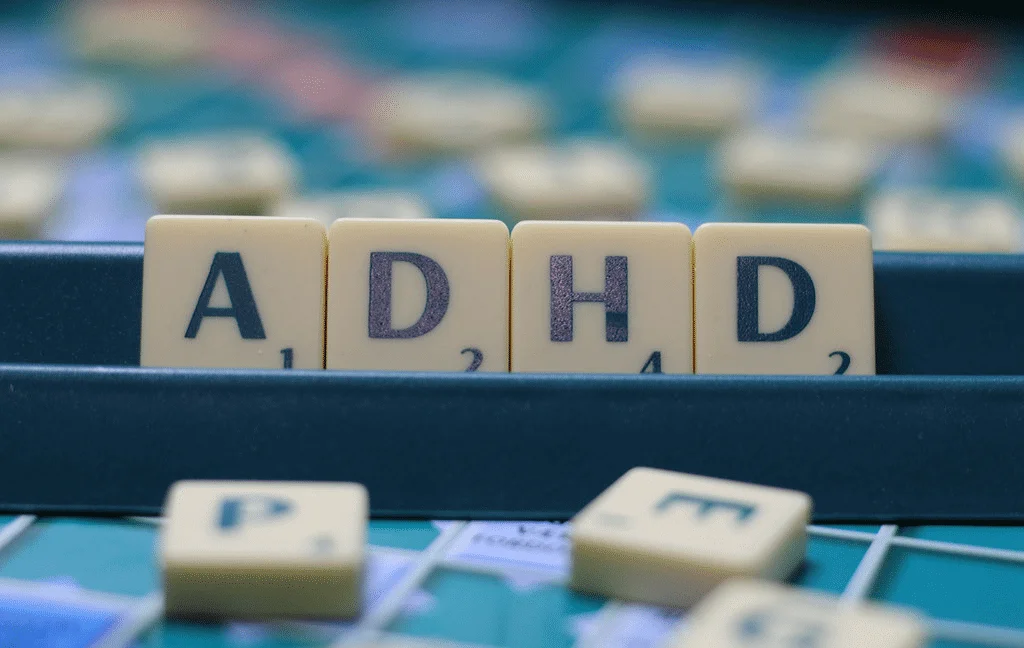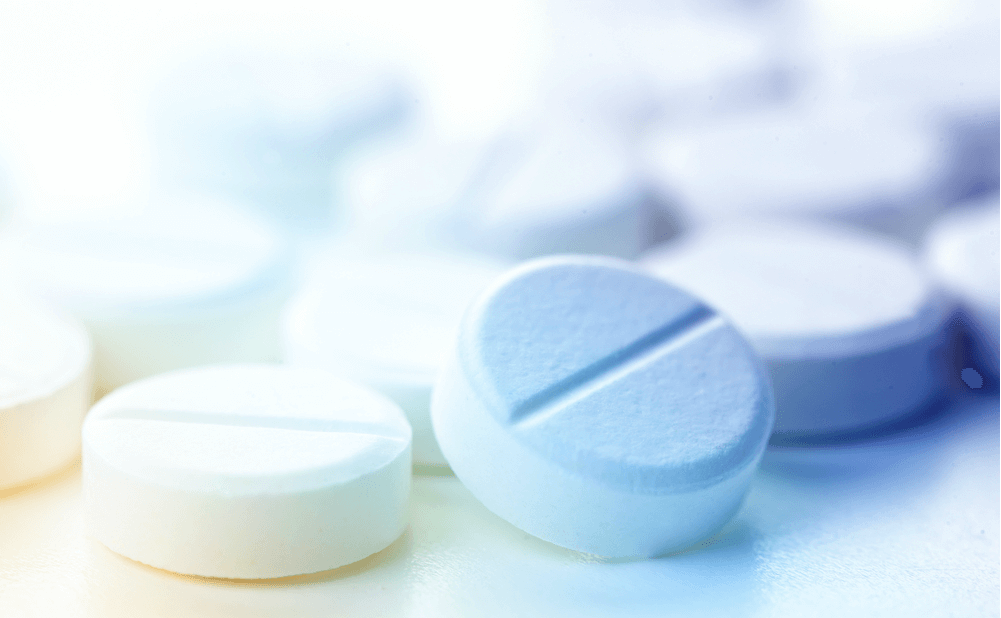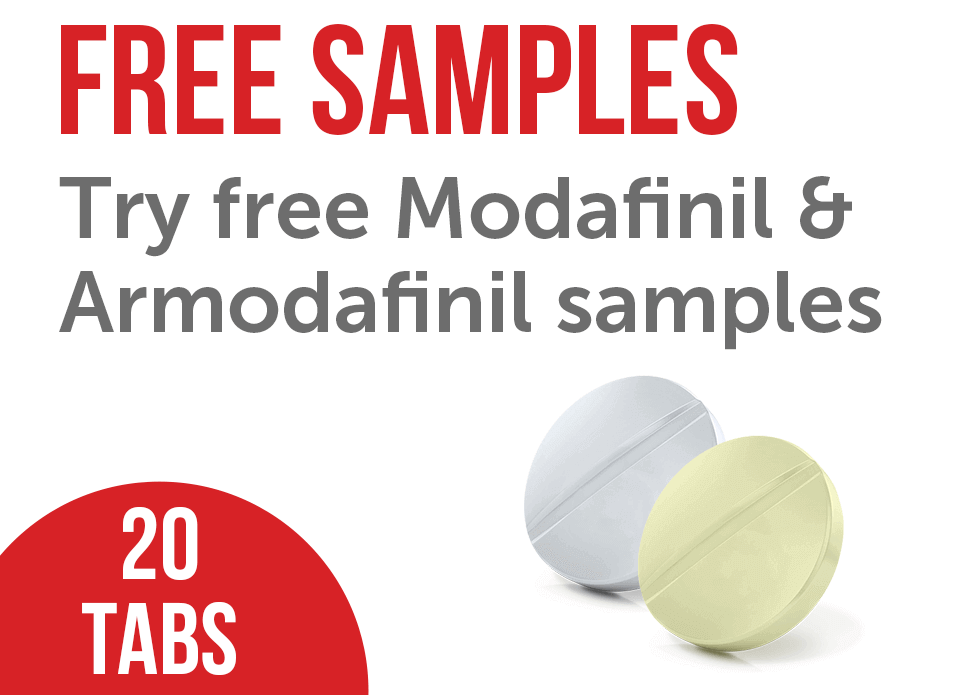Most people search online: Can I take armodafinil for Attention Deficit Hyperactivity Disorder (ADHD)? Well, armodafinil could potentially be a valuable new therapy option for patients with ADHD. It’s a prescription med that treats sleep disorders. However, it has a wide range of “off-label” uses. Certainly, over the past decade, there’s been an increased inquisitiveness in armodafinil as a therapy for ADHD. It’s oftentimes preferred over alternatives because it’s remarkably less likely to result in tolerance & addiction.
While there are many meds prescribed to treat ADHD, armodafinil is impressively gaining popularity as a probable remedy option. But is armodafinil efficacious for treating ADHD? How does it function?
In this in-depth guide, we will examine all you need to understand about using armodafinil for ADHD in adults. We will exclusively discuss how armodafinil works, its negative effects, the most suitable dose for ADHD, as well as how it compares with other treatments such as modafinil and Adderall.
Armodafinil Features
Armodafinil is exceptionally one of the most popular nootropics. It was created nearly two decades after the famous “smart tab” modafinil. In June 2007, it was endorsed by the United States Food and Drug Administration (FDA) for the therapy of extreme daytime sleepiness induced by obstructive sleep apnea (OSA), shift work sleep disorder (SWSD), & also narcolepsy [1]. While armodafinil doesn’t cure the said conditions, it does aid users to remain awake & productive during the day [2].
Besides, armodafinil belongs to a category of meds typically referred to as “wakefulness-fostering agents.” Sold under the trade name Nuvigil®, it’s believed to function by influencing the levels of certain chemical substances in areas of the brain that superbly regulate the wake-sleep cycle.
Consider that Nuvigil is produced by the pharmaceutical company Cephalon, Inc., a completely-owned subsidiary of Teva Pharmaceutical Industries Ltd.
Furthermore, the nootropic is remarkably used off-label to therapy ADHD, dementia, chronic fatigue syndrome, major depressive disorder, jet lag, and Parkinson’s & Alzheimer’s disease, among other health conditions.
Similarly, a high percentage of healthy individuals, such as executives, students, CEOs, factory workers, & military personnel, use armodafinil as a potent nootropic to augment their cognitive abilities & ultimately improve productivity.
Notably, most individuals across the globe use it due to the fear of academic failure, to boost their performance, the urge to meet high work demands, & certainly to overcome procrastination.
Impressively, armodafinil works in the body to heighten cognitive functions with rewards such as boosted memory, mental acuity, awesome perception, alertness, learning, thinking, motivation, vigilance, decision-making & planning, attention, etc. Some individuals administer this stunning “smart drug” for other rewards such as boosted concentration & focus, heightened productivity & drive, as well as fostered mental stamina. Just like stimulants, armodafinil superbly affects the mind, producing diverse cognitive benefits.
Key Facts About ADHD
ADHD is denoted by signs involving impulsive behavior, becoming inattentive to details, hyperactivity, trouble with organization, getting sidetracked from schoolwork, & being easily distracted. Other behaviors comprise fidgeting or squirming, incapacity to remain seated when wished, unsuitable running or climbing, & talking excessively.
Certainly, ADHD in adults is frequently internalized & may present as scattered thoughts, restlessness, & inadequate time management. As a note, it’s a common disease in children & can sometimes extend into adulthood. Most individuals experience these symptoms from time to time; but in ADHD, they are more severe, transpire more often, & interfere with an individual’s capability to function socially, in the workplace, or at school [3]. The ADHD condition is divided into three subtypes by predominant symptomatology: Hyperactive-Impulsive (ADHD-HI), Inattentive (ADHD-I), & Combined (ADHD-C). Manifestation clusters can vary as individuals mature & develop.
A recent study compared the genes of individuals with ADHD to look at dopamine function [4].
The analysis looked at three specific genes:
- Dopamine receptor 4 (DRD4);
- Dopamine transporter gene (DAT1);
- Dopamine receptor 5 (DRD5).
Research scientists in this study discovered standard genetic variations in individuals with ADHD problems on all three of these genes.
Why is this an essential discovery for those with ADHD?
What we can certainly take away from studies like this is that ADHD has a consequential relationship with dopamine. It implies that when it comes to treating the disorder, we can try to manage the issues provoked by the gene variations.
Remarkably, this examination offers an exceptional explanation for why drugs that tend to benefit ADHD the most also tend to heighten dopamine levels.
These drugs comprise Adderall, Concerta, Ritalin, modafinil, and armodafinil.
Using Armodafinil to Treat ADHD
Although armodafinil is periodically used by physicians to treat ADHD, it’s regarded as “off-label” in the USA because it hasn’t yet been approved by the FDA for this use. This is similar to modafinil. In 2006, the FDA rejected its approval for this condition [8].
An excellent offer! Nuvigil prices are very high if ordering without insurance. Besides, drug prices will vary depending on where you buy them. It is ultimately the best bet to buy generic armodafinil online from a vendor such as ModafinilXL.com at an extremely low cost. You don’t need to provide insurance or a prescription from this vendor if you have consulted with a physician & got an OK to use the armodafinil med.
While stimulants such as Ritalin & Adderall are efficacious remedies for ADHD, not everyone responds well to their treatments. This is the case — there are various alternative forms of treatment, so the FDA advisory panel determined to be careful. Nonetheless, it emerges that modafinil/armodafinil superbly has a lower abuse potential than these other drugs.
So why armodafinil for ADHD? The first thing to consider is the link between armodafinil & dopamine, as discussed in the next section.
Drug Main Benefits
Just like modafinil, armodafinil heightens dopamine concentrations in the brain [5]. It accomplishes this similar to other common ADHD meds like Adderall and Ritalin, both of which have a protracted history of use for treating ADHD in conventional medicine.
Armodafinil augments dopamine concentrations in the synapses by stopping the neurons from reabsorbing & also breaking it down.
Generally, dopamine is released to exercise its effect, then quickly reabsorbed & broken down. Impressively, armodafinil thwarts the reabsorption & breakdown stages, permitting it to exert its effects for a LONGER period.
Remarkably, dopamine is incredibly consequential for the mind to be capable to concentrate on one thing at a time.
This is because dopamine is significantly involved in the reward center of the brain.
The reward center is a distinctive region within the brain that induces the release of “feel good” molecules like oxytocin as a unique path to reward useful behaviors. This is how our habits are constructed.
Unquestionably, our brain treasures obtaining rewards & will pursue behaviors that trigger this reaction.
Another remarkable aspect to note is dopamine & addiction.
Regrettably, the dopamine-regulated reward center is also liable for every process involved with addiction. In this case, many illicit compounds activate the reward system due to their comforting or pain-relieving advantages. This provokes a release of oxytocin in the brain solely as part of the reward. After a while, the mind begins to desire the things that compel this oxytocin release, & we simply become addicted to the drug.
Besides, we can also become addicted to things like sex, exercise, or eating through these same processes.
How about ADHD & the reward center?
Certainly, most individuals have adequate dopamine levels & can activate the reward center efficaciously. This makes it uncomplicated to build habits & stay focused on the same thing for more extended periods.
People diagnosed with ADHD have problems with this system & ultimately require working extra hard to obtain favorable feedback in the reward center of the brain.
Interestingly, concentrating on one task for more than a few minutes can indeed be ambitious, as the brain seeks out more exciting activities.
If dopamine levels augment, we may be capable to lower the threshold for energizing the reward center.
This would certainly aid to control the fidgeting & jitteriness linked with individuals living with ADHD.
The benefits of taking armodafinil for ADHD include the following:
- boosted energy: Individuals with attention-deficit issues have difficulties with energy. Although some individuals may be overly energetic, many struggles with lower arousal & feeling tired or sluggish. Armodafinil can help perk people up;
- insanely great productivity: An increase in energy will lead to a boost in productivity. Many high-profile business executives, students, professionals, and every individual from all walks of life use armodafinil as a means to aid them to get an edge by getting more accomplished;
- augmented alertness: Popping it while having ADHD makes you feel more alert. ADHD patients struggle with staying alert. Armodafinil tablet promotes vigilance & will help keep your brain as alert as possible;
- aid with awesome cognition: If having attention-deficit problems, you may struggle with low arousal. The brain isn’t producing sufficient high-frequency brain waves to enable you to focus. Armodafinil boosts overall arousal in the nervous system, which in turn ameliorates cognition.
Armodafinil also offers you superb focus. You can focus better as a result of lessening your signs of hyperactivity.
Dosage of Armodafinil for ADHD
How much armodafinil is urged for treating ADHD?
The suggested armodafinil dosage is 150 mg/day, administered orally first thing in the morning with water. This is the same standard armodafinil dosage prescribed for sleeping disorders and other conditions, even for healthy individuals popping it for cognitive augmentation. However, a reduced dosage of 75 mg/day is urged for elderly ADHD patients or those with reduced kidney function.
What is most essential is that you administer the dose of armodafinil recommended to you by your physician. Furthermore, a daily dose of 75 to 300 mg of armodafinil can be administered to lessen the symptoms & ultimately heighten concentration.
Nonetheless, there’s a problem with higher doses of armodafinil. It’s the development of tolerance. Indeed, if a medicine is used frequently over long periods, the body often begins to resist its effects. This implies that more armodafinil dosage will be necessitated to be popped than usual to trigger the same effects.
If you plan on using armodafinil daily for ADHD, it’s significantly urged that you first discuss your condition & the options available with your physician.
Side Effects & Safety
Consider that armodafinil is extremely safe but can induce some side effects. The onset is based on an individual’s adherence to medication, health conditions, & response to med. It’s possible to have a headache, upset stomach, nausea, etc. In some individuals, armodafinil can trigger anxiety or insomnia. If you experience frequent insomnia or anxiety while taking armodafinil, try taking some time off the med every week (such as a day or two) or just lower your dose.
Most individuals find improvement when they take their tablets sooner in the day. They can sleep well at night. If you persist in experiencing problems with anxiety or insomnia, it may be most suitable to look for another therapy option.
Other side effects include confusion, diarrhea, dry mouth, hyperventilation, and irritability. Although not all of these negative effects may transpire, if they do happen, they may need medical attention. Drugs.com has a comprehensive list of armodafinil’s adverse effects. Be sure to check before using armodafinil [6].
Furthermore, don’t mix armodafinil with other meds, which may cause interaction. Some of them include the following:
- CYP2C19 & CYP3A4/5 substrates;
- monoamine oxidase inhibitors;
- blood thinners;
- certain antibiotics;
- anti-seizure meds;
- birth control pills.
The list isn’t comprehensive. Additionally, booze can also heighten the chance of negative effects. Avoid it when using armodafinil. It’s possible to induce birth defects or complications during pregnancy, though there’s not a lot of scientific proof available on the topic.
Armodafinil vs Modafinil for ADHD
There has been no head-to-head comparability between armodafinil & modafinil in clinical studies. Likewise, there’s no info available on the bioavailability of armodafinil drug given on the official manufacturers’ website.
Nonetheless, the structure of armodafinil is akin to that of modafinil, with just a few differences. For instance, armodafinil comprises only a single enantiomer & is pure R-modafinil while modafinil has both S-modafinil and R-modafinil. Further, armodafinil has fewer negative effects than modafinil, hence its use by patients with various health conditions has been more common than that of modafinil.
Although everyone responds differently to medication, modafinil has an elimination half-life of 12 to 14 hours, while armodafinil’s half-life is 15 to 20 hours. Certainly, both compounds have a short onset time between 15 and 45 minutes after popping it. The longer half-life of armodafinil makes it more comfortable to operate daily.
Regarding armodafinil vs modafinil, armodafinil is believed to be better than modafinil in treating ADHD since it doesn’t induce blockage of the dopamine transporter (and consequently the dopaminergic system) like modafinil.
Armodafinil vs Adderall for ADHD
Adderall is a phenethylamine & prescription medicine that’s primarily used to therapy ADHD & wakefulness conditions such as narcolepsy. It functions exceptionally well for enhancing cognition & can even augment mood by targeting the neurotransmitters like adrenaline, norepinephrine, & dopamine. When administered at the right dosage, it can heighten productivity and brainpower.
Furthermore, Adderall is a schedule II controlled substance, while armodafinil is a schedule IV controlled substance. That implies that Adderall has a high possibility for dependence & also misuse.
Just like armodafinil, Adderall functions by changing certain naturally occurring brain chemicals by augmenting the effects of norepinephrine + dopamine neurotransmitters.
The most influential difference between armodafinil vs. Adderall meds is their structure, which translates to substantial differences in their prospect of addiction & negative effects. Regarding armodafinil vs Adderall, both have stimulant-type effects, although armodafinil isn’t classed as a stimulant [7].
Unlike Adderall, armodafinil isn’t authorized for treating ADHD, even though some analyses have indicated that it helps in the treatment of impulsivity signs in ADHD patients.
Certainly, Ritalin and Adderall are the most typically prescribed meds for therapy for ADHD. Because armodafinil is well-researched and safe, we believe it’s better tolerated and efficacious in treating ADHD.
Conclusion
This blog post guide has looked into the use of armodafinil for ADHD. It has given an in-detailed approach to why this insanely great drug is exceptionally effective for those dealing with attention concerns. You have got some tips on why it’s likely much safer to take over the long term in comparison to many popular ADHD meds currently on the market, such as Adderall. In a nutshell, armodafinil is the ultimate med for this condition, although it’s not been approved by the FDA.
References
- NUVIGIL™ (armodafinil) Tablets [C-IV] (PDF). Retrieved: October 2, 2022. Corpina.com
- HIGHLIGHTS OF PRESCRIBING INFORMATION (PDF). Retrieved: October 2, 2022. Accessdata.fda.gov
- Attention Deficit Hyperactivity Disorder (ADHD). By Nick Milazzo and Brady Holmer. Fact checked by: Kamal Patel. Last Updated: August 17, 2022. Retrieved: October 2, 2022. Examine.com.
- Molecular genetics of attention-deficit/hyperactivity disorder. By Stephen V. Faraone, Roy H. Perlis, Alysa E. Doyle, Jordan W. Smoller, Jennifer J. Goralnick, Meredith A. Holmgren, and Pamela Sklar. Published: June 2005. Pubmed.ncbi.nlm.nih.gov.
- R-Modafinil (Armodafinil): A Unique Dopamine Uptake Inhibitor and Potential Medication for Psychostimulant Abuse. By Claus Juul Loland, Maddalena Mereu, Oluyomi M. Okunola-Bakare, et al. Researchgate.net.
- Armodafinil Side Effects. Medically reviewed by Drugs.com. Last updated: Jun 19, 2022. Retrieved: October 2, 2022. Drugs.com.
- Modafinil vs Adderall: What’s the difference? Medically reviewed by Drugs.com. Last updated: Sep 13, 2022. Retrieved: October 2, 2022. Drugs.com.
- FDA Committee Rejects ADHD use for Modafinil. By Jon Hamilton. Last updated: March 24, 2006. Npr.org.










